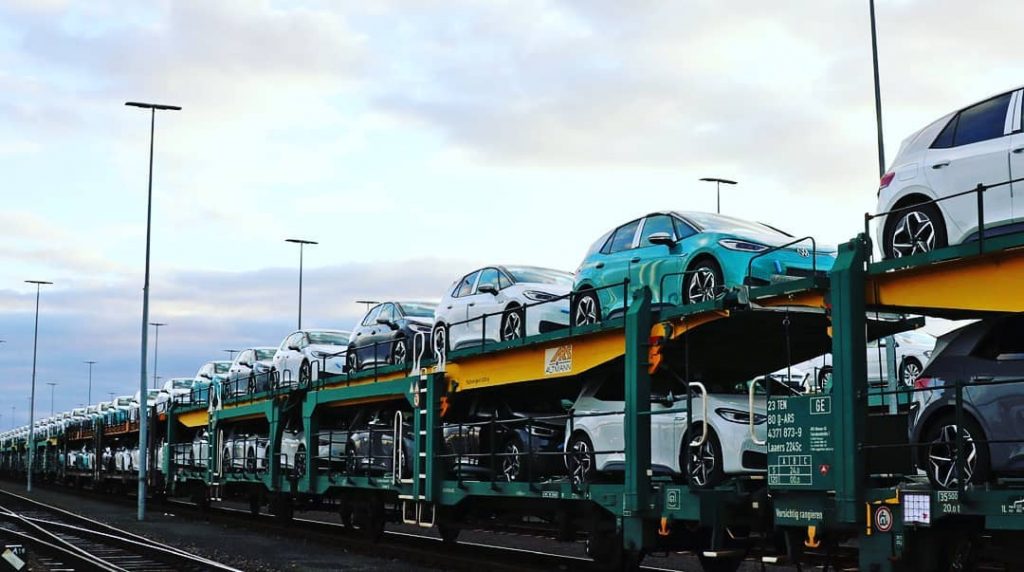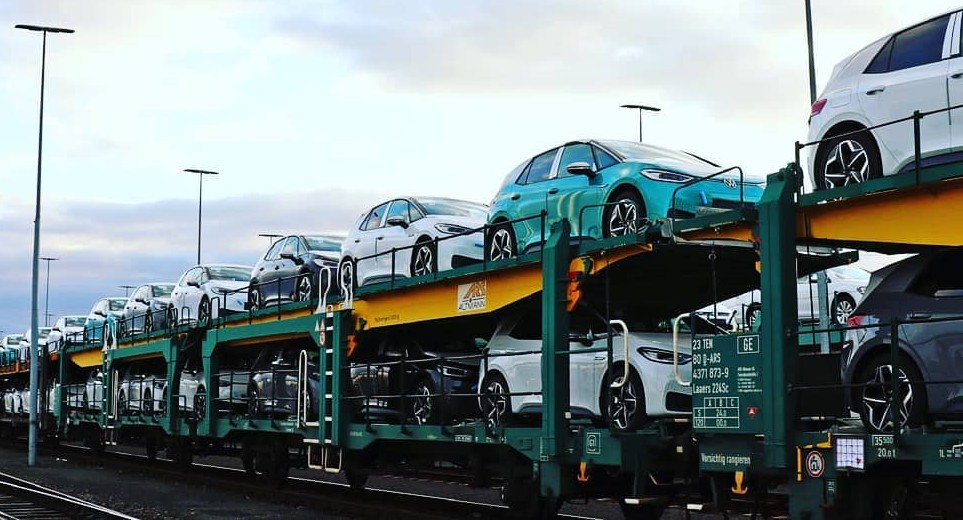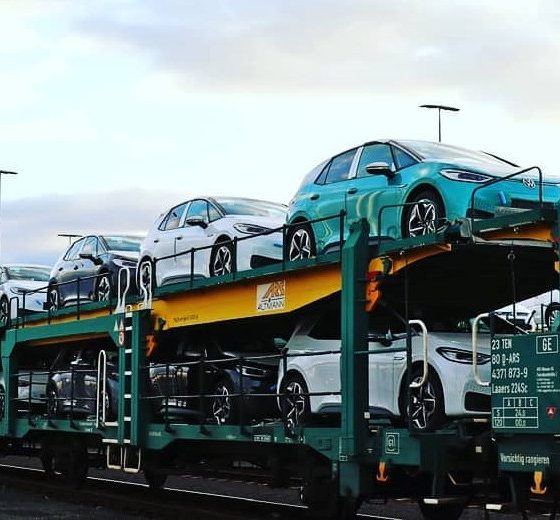There is a storm brewing in Volkswagen’s Wolfsburg plant, and it can very well make or break the career of CEO Herbert Diess, a strong proponent for the company’s transition to electric mobility. As problems continue to pile up for Volkswagen’s electric car program, the ID.3, a vehicle considered to be a rival to the Tesla Model 3, is starting to turn into a cautionary tale.
An extensive report from German news outlet Manager Magazin provided an in-depth look at the current state of Volkswagen’s electric vehicle initiative. According to the esteemed magazine, experts and top managers from the automaker are now meeting every working day in a massive push to get the ID.3 ready for consumer deliveries. But despite their disciplined efforts, the affordable EV is proving stubborn, causing notable delays in its release.
The Volkswagen ID.3 is an essential car for the German automaker, being a personal project for Diess, who has emerged as one of the most prominent voices in the auto industry pushing for electrification. More than a vehicle that can potentially beat the Tesla Model 3 in terms of pricing, the ID.3 is also the automaker’s key in avoiding €10 billion worth of emissions fines this year. Without the ID.3, the penalties cannot be avoided. Even with the vehicle on the market, VW would have to sell about 100,000 in 2020 to meet the company’s CO2 targets.

But the Volkswagen ID.3 ramp has been rife with issues. While the vehicles can be produced efficiently using the company’s extensive experience in car manufacturing, the ID.3’s software has proven troublesome. Simply put, the software of the vehicle does not work as it should, and VW experts have pointed the finger at the company’s haste in rolling out the all-electric car for production. Volkswagen experts have noted that the ID.3’s underlying architecture was developed too hastily, as the car’s system parts often don’t understand each other, resulting in errors.
Thus, every day, those involved with the ID.3 project meet and try to solve the car’s underlying issues. Manager Magazin‘s sources note that Volkswagen is now operating at an almost military level in its efforts to fix the ID.3’s software issues, but still, hundreds of test drivers report new faults in the vehicle nearly every day. One of the magazine’s sources, who claimed to be present in these meetings, noted that up to 300 faults could be reported in one day.

Amidst these issues, Volkswagen has adjusted the ID.3’s target from 100,000 in 2020 to just 80,000. Fortunately for the German automaker, it is a big company, and it includes carmakers such as Audi and Porsche, both of whom have already released their respective electric cars. But even these two companies’ EVs are not exactly rolling out smoothly either. The e-tron recently halted its production due to battery constraints from LG Chem, prompting Audi to lower the premium SUV’s forecast from 70,000 to 40,000 this year. The Porsche Taycan, despite excellent reviews from car enthusiasts, is also getting its deliveries in Germany delayed.
Volkswagen CEO Herbert Diess has stated that the shift to electric mobility will be difficult, noting at a top management conference last month that the compliance with the limits for supplying, building, and selling battery electric vehicles was “perhaps the most difficult task Volkswagen has ever had to face.” Considering the ID.3 program’s progress so far, as well as reports that the Porsches and Piëchs, VW’s major owners, are growing restless, it appears that the company’s EV challenges may just be beginning.
Ultimately, the ID.3’s issues are an unfortunate roadblock to the EV movement as a whole. The vehicle, after all, is a mass-market car, and it has the potential to be the second coming of the ubiquitous Beetle. The company just has to get its software settled and refined first–something that a small carmaker from Silicon Valley seems to have predicted when it started developing its first vehicles less than two decades ago.
H/T to JPR007.

Elon Musk
Elon Musk’s X will start using a Tesla-like software update strategy
The initiative seems designed to accelerate updates to the social media platform, while maintaining maximum transparency.

Elon Musk’s social media platform X will adopt a Tesla-esque approach to software updates for its algorithm.
The initiative seems designed to accelerate updates to the social media platform, while maintaining maximum transparency.
X’s updates to its updates
As per Musk in a post on X, the social media company will be making a new algorithm to determine what organic and advertising posts are recommended to users. These updates would then be repeated every four weeks.
“We will make the new 𝕏 algorithm, including all code used to determine what organic and advertising posts are recommended to users, open source in 7 days. This will be repeated every 4 weeks, with comprehensive developer notes, to help you understand what changed,” Musk wrote in his post.
The initiative somewhat mirrors Tesla’s over-the-air update model, where vehicle software is regularly refined and pushed to users with detailed release notes. This should allow users to better understand the details of X’s every update and foster a healthy feedback loop for the social media platform.
xAI and X
X, formerly Twitter, has been acquired by Elon Musk’s artificial intelligence startup, xAI last year. Since then, xAI has seen a rapid rise in valuation. Following the company’s the company’s upsized $20 billion Series E funding round, estimates now suggest that xAI is worth tens about $230 to $235 billion. That’s several times larger than Tesla when Elon Musk received his controversial 2018 CEO Performance Award.
As per xAI, the Series E funding round attracted a diverse group of investors, including Valor Equity Partners, Stepstone Group, Fidelity Management & Research Company, Qatar Investment Authority, MGX, and Baron Capital Group, among others. Strategic partners NVIDIA and Cisco Investments also continued support for building the world’s largest GPU clusters.
News
Tesla FSD Supervised wins MotorTrend’s Best Driver Assistance Award
The decision marks a notable reversal for the publication from prior years, with judges citing major real-world improvements that pushed Tesla’s latest FSD software ahead of every competing ADAS system.

Tesla’s Full Self-Driving (Supervised) system has been named the best driver-assistance technology on the market, earning top honors at the 2026 MotorTrend Best Tech Awards.
The decision marks a notable reversal for the publication from prior years, with judges citing major real-world improvements that pushed Tesla’s latest FSD software ahead of every competing ADAS system. And it wasn’t even close.
MotorTrend reverses course
MotorTrend awarded Tesla FSD (Supervised) its 2026 Best Tech Driver Assistance title after extensive testing of the latest v14 software. The publication acknowledged that it had previously criticized earlier versions of FSD for erratic behavior and near-miss incidents, ultimately favoring rivals such as GM’s Super Cruise in earlier evaluations.
According to MotorTrend, the newest iteration of FSD resolved many of those shortcomings. Testers said v14 showed far smoother behavior in complex urban scenarios, including unprotected left turns, traffic circles, emergency vehicles, and dense city streets. While the system still requires constant driver supervision, judges concluded that no other advanced driver-assistance system currently matches its breadth of capability.
Unlike rival systems that rely on combinations of cameras, radar, lidar, and mapped highways, Tesla’s FSD operates using a camera-only approach and is capable of driving on city streets, rural roads, and freeways. MotorTrend stated that pure utility, the ability to handle nearly all road types, ultimately separated FSD from competitors like Ford BlueCruise, GM Super Cruise, and BMW’s Highway Assistant.
High cost and high capability
MotorTrend also addressed FSD’s pricing, which remains significantly higher than rival systems. Tesla currently charges $8,000 for a one-time purchase or $99 per month for a subscription, compared with far lower upfront and subscription costs from other automakers. The publication noted that the premium is justified given FSD’s unmatched scope and continuous software evolution.
Safety remained a central focus of the evaluation. While testers reported collision-free operation over thousands of miles, they noted ongoing concerns around FSD’s configurable driving modes, including options that allow aggressive driving and speeds beyond posted limits. MotorTrend emphasized that, like all Level 2 systems, FSD still depends on a fully attentive human driver at all times.
Despite those caveats, the publication concluded that Tesla’s rapid software progress fundamentally reshaped the competitive landscape. For drivers seeking the most capable hands-on driver-assistance system available today, MotorTrend concluded Tesla FSD (Supervised) now stands alone at the top.
News
Elon Musk’s Grokipedia surges to 5.6M articles, almost 79% of English Wikipedia
The explosive growth marks a major milestone for the AI-powered online encyclopedia, which was launched by Elon Musk’s xAI just months ago.

Elon Musk’s Grokipedia has grown to an impressive 5,615,201 articles as of today, closing in on 79% of the English Wikipedia’s current total of 7,119,376 articles.
The explosive growth marks a major milestone for the AI-powered online encyclopedia, which was launched by Elon Musk’s xAI just months ago. Needless to say, it would only be a matter of time before Grokipedia exceeds English Wikipedia in sheer volume.
Grokipedia’s rapid growth
xAI’s vision for Grokipedia emphasizes neutrality, while Grok’s reasoning capabilities allow for fast drafting and fact-checking. When Elon Musk announced the initiative in late September 2025, he noted that Grokipedia would be an improvement to Wikipedia because it would be designed to avoid bias.
At the time, Musk noted that Grokipedia “is a necessary step towards the xAI goal of understanding the Universe.”
Grokipedia was launched in late October, and while xAI was careful to list it only as Version 0.1 at the time, the online encyclopedia immediately earned praise. Wikipedia co-founder Larry Sanger highlighted the project’s innovative approach, noting how it leverages AI to fill knowledge gaps and enable rapid updates. Netizens also observed how Grokipedia tends to present articles in a more objective manner compared to Wikipedia, which is edited by humans.
Elon Musk’s ambitious plans
With 5,615,201 total articles, Grokipedia has now grown to almost 79% of English Wikipedia’s article base. This is incredibly quick, though Grokipedia remains text-only for now. xAI, for its part, has now updated the online encyclopedia’s iteration to v0.2.
Elon Musk has shared bold ideas for Grokipedia, including sending a record of the entire knowledge base to space as part of xAI’s mission to preserve and expand human understanding. At some point, Musk stated that Grokipedia will be renamed to Encyclopedia Galactica, and it will be sent to the cosmos.
“When Grokipedia is good enough (long way to go), we will change the name to Encyclopedia Galactica. It will be an open source distillation of all knowledge, including audio, images and video. Join xAI to help build the sci-fi version of the Library of Alexandria!” Musk wrote, adding in a later post that “Copies will be etched in stone and sent to the Moon, Mars and beyond. This time, it will not be lost.”










